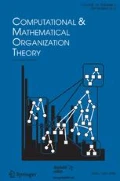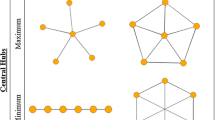Abstract
Since the events of September 11, 2001, the United States has found itself engaged in an unconventional and asymmetric form of warfare against elusive terrorist organizations. Defense and investigative organizations require innovative solutions that will assist them in determining the membership and structure of these organizations. Data on covert organizations are often in the form of disparate and incomplete inferences of memberships and connections between members. NETEST is a tool that combines multi-agent technology with hierarchical Bayesian inference models and biased net models to produce accurate posterior representations of a network. Bayesian inference models produce representations of a network's structure and informant accuracy by combining prior network and accuracy data with informant perceptions of a network. Biased net theory examines and captures the biases that may exist in a specific network or set of networks. Using NETEST, an investigator has the power to estimate a network's size, determine its membership and structure, determine areas of the network where data is missing, perform cost/benefit analysis of additional information, assess group level capabilities embedded in the network, and pose “what if” scenarios to destabilize a network and predict its evolution over time.
Similar content being viewed by others
References
Butts, C. (2002), “Network Inference, Error, and Informant (In)Accuracy:ABayesian Approach,” Social Networks, in press.
Krackhardt, D. (1987), “Cognitive Social Structures,” Social Networks, 9, 104–134.
Krebs, V. (2002), “Mapping Networks of Terrorist Cells,” Connections, 24(3), 43–52.
Ronfeldt, D. and J. Arquilla (September 21, 2001), “Networks, Netwars, and the Fight for the Future,” First Monday, Issue 6, No. 10. Available online at http://firstmonday.org/issues/issue6 10/ronfeldt/index.htm
Skvoretz, J. (1990), “Biased Net Theory: Approximations, Simulations, and Observations,” Social Networks, 12, 217–238.
Smith, D., M. Corbin and C. Hellman (2001), “Reforging the Sword: Forces for a 21st Century Security Strategy,” Center for Defense Information. Available online at http://www.cdi.org/mrp/reforging-full.pdf
TRADOC Pam 525-5. (August 1, 1994), “Force XXI Operations,” Department of the Army, Headquarters, United States Army, Training and Doctrine Command, Fort Monroe, VA.
Author information
Authors and Affiliations
Rights and permissions
About this article
Cite this article
Dombroski, M.J., Carley, K.M. NETEST: Estimating a Terrorist Network's Structure—Graduate Student Best Paper Award, CASOS 2002 Conference. Computational & Mathematical Organization Theory 8, 235–241 (2002). https://doi.org/10.1023/A:1020723730930
Issue Date:
DOI: https://doi.org/10.1023/A:1020723730930




